DOWN THE YUKON-Page 3
A very brief stop-over in Whitehorse

From my journal(May 25th;Day-6)..."Just beyond the mild rapids of the dam a small group of native children playing near the water cheered me on, then a fisherman, and then into the capitol city. I docked with a graceful landing just between the city park and the Yukon government buildings. Fortunately I saw no parking meters so I tied up to a big rock and dropped anchor.
"As I walked toward town I could keep an eye on the Voyager but for the short time that I was in the Kentucky Fried Chicken place and the grocery store, I was momentarily out of view. Fortunately all of my gear was still intact upon returning and oh how I relished that fried chicken as I found the current taking me farther and farther back into the wilderness."

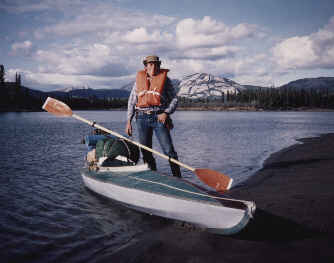
Early one morning I stopped for a pose just as the Yukon turned into a huge lake once again.

Into the surge of Lake Laberge!
(And I thought that the lakes were history!)Note: Lake Laberge is about 30 miles long and took two days to safely navigate. During the Klondike goldrush this lake was immortalized by my favorite Far North poet, Robert Service. Here is the first verse of that poem until you can find the book yourself, about a man who died on Lake Laberge in search of gold:
"THE CREMATION OF SAM McGEE" There are strange things done in the midnight sun
by, Robert Service
By the men who toil for gold;
The Arctic trails have their secret tales
That would make your blood run cold;
The Northern Lights have seen queer sights,
But the queerest they ever did see
Was that night on marge of Lake Lebarge
I cremated Sam McGee.

Campsite near Lake Laberge.
From my journal (May 27st;Day-8)..."The entire day was dramatically windy on Laberge. Due to a relentless wind I never had any leisure time to rest my arms and it was a repeated game of looking for the next point then paddling to it, then starting all over again. This constant struggle caused a sharp annoying pain in my shoulder but I just had to persevere. I also had difficulty keeping my fingers warm with all the spray from the 3 to 4 foot waves swiping the hull of my boat and wet gloves made matters worse. "When I had the strength to build up enough speed I could quickly turn directly into the waves as they washed over the bow and I could actually feel the wooden frame of my portable boat flex and bend itself with the powerful surge of the waves... an eerie feeling. "It was a never ending and dangerous battle all day long but finally I was back on the narrow, yet secure banks of the river again. I was completely amazed by how such a small vein of water could drain such a huge mass of water as this magnificent lake. Just onto the river I inspected an old log camp named Lower Laberge which was the resting place for the gold seekers of '98 who had just fought the surge of Laberge. I knew exactly how they must have felt! I made camp on the second bend down Thirty Mile River as a bald eagle flew overhead. I built a fire to dry out first, then found myself sound asleep on the ground for an hour before eating and retiring. A bear could have walked up and ate me I was so dead tired. No more lakes between here and the Bering Sea was all that I could think before drifting off... Thank God!"
Here I am on the morning after conquering Lake Laberge on Thirty Mile River, a section of the Yukon after the lake.
Down Thirty Mile River this is the deck of an old sunken sternwheeler named Evelyn". It has been decaying in the river since it sunk during the goldrush. I explored the length of the old ship as I tried to imagine all the sternwheelers full with people on their way to Dawson nearly a hundred years ago in the mercy of the Yukon. And now the river is a complete wilderness again except for a few old skeletons like the Evelyn reminding us of what once was."
Another cabin and old goldrush artifacts in the continuing sequence of an outdoor museum.
From my journal (May 31st;Day-12)...Ever since the passing of the Teslin, Big Salmon, and the Little Salmon rivers, the water has become increasingly more of a brown silty texture and quite a contrast to the crystal clear lakes and Thirty Mile River. I suppose that the begining of anything should be the best, even the headwaters of the Yukon. Despite the silt I still make the river my drinking water after boiling. Tastes pretty good to me!".
Here is my kayak in the midnight sun, a photo taken from an island campsite directly in the middle of the river. Although I know that bears can swim, I usually felt better when surrounded by water.
Here is my kayak at the same spot as the previous photo on the next morning from my island campsite with some awesome low lying clouds hugging the mountainside.
Another old riverboat store that the people of the Yukon are trying to preserve for future generations.
Although this old historic town was now abandoned, the people of the Yukon have restored many of the buildings. I enjoyed walking around and exploring the area which dates back to June 16, 1843, when Robert Campbell of the Hudson's Bay Company first discovered this spot on the Yukon. He returned five years later and set up a trading post for the famous fur trading company.
The people of the Yukon provide this beautiful log cabin for weary travelers right on the bank of the river at Fort Selkirk. The next photo shows the view of the river from the front porch.
Imagine the luxury of a heat-powered shower right on the bank of the mighty Yukon!
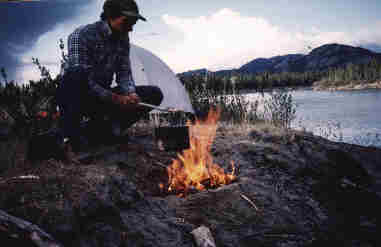

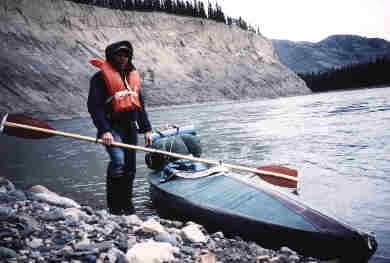
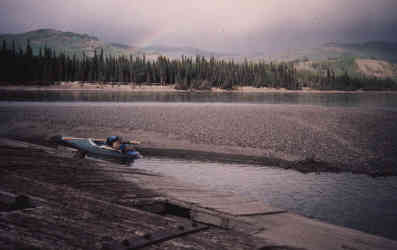
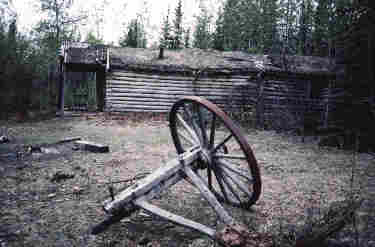


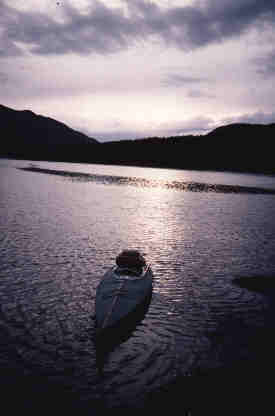
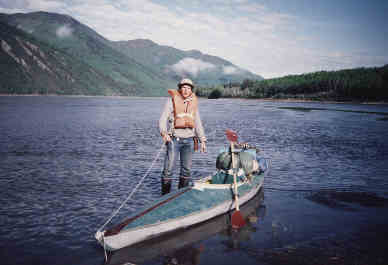
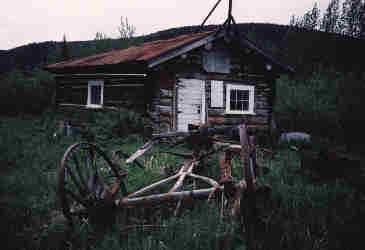

Fort Selkirk


